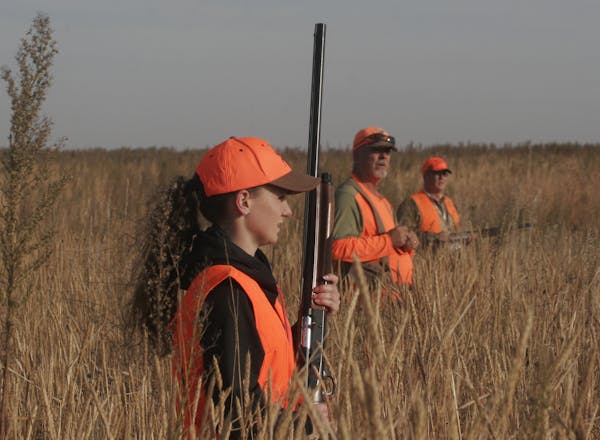SPRING VALLEY, MINN. – Early Saturday morning, Andy Ness pulled an egg bake from the oven of the farmhouse he shares with his wife, Cate, and young daughters, Ashlyn and Claire. This was within a stone's throw of the Iowa border, and a summerlike blue sky had just then revealed itself above the tall cottonwoods that grace the Ness homestead. A good day, this, Andy said, to open the pheasant season. And it was, beginning with the egg bake, also coffee and bacon.
Not typically a part of Minnesota's prime pheasant range, this portion of southeast Minnesota nonetheless has a seen a resurgence of the birds in recent years.
Mild weather last winter helped. But so has an emphasis on conservation, led by efforts of local landowners as well as those of Ness and other members of the Upper Iowa River Chapter of Pheasants Forever, of which Andy is habitat chairman.
"We don't live in the best pheasant country, we know that," Andy said, noting that outside his home's kitchen window sprawl thousands of acres of corn. "In a typical hunt for us, we might see two or three roosters. That's not bad. If you work at it, there's enough."
Having grown up on a farm, Andy knows something about work. His folks had a corn and bean operation initially. Then they farmed swine. And for a few bucks on the side, in high school, he milked a neighbor's cows.
The payoff today is that he knows nearly everyone in the township, and these friends sometimes come with benefits — access to private hunting ground being primary.
That said, on Saturday we hunted public land in the form of a state wildlife management area, a blue-collar-like selection I endorsed.
Joining Andy and me were James Wendel, a Pioneer seed salesman who lives not far down a gravel road from Andy; Neal Hinners of Spring Valley, a Minnesota Department of Transportation employee; and Neal's sons, Logan of Wyoming, Minn., a graphic artist who works at Pheasants Forever's White Bear Lake national headquarters, and Kale of Bagley, Minn., an engineer.
Splitting up, Andy, James and I approached the wildlife area from the east, while the Hinners came at it from the west.
Tall and thick, the grass we stepped into precisely at 9 a.m. will in winter be a haven for all manner of wildlife, pheasants included. By then the vast cornfields that on Saturday stretched nearly in every direction will be harvested, forcing the birds to seek shelter wherever it can be found.
Fifteen minutes passed before Daisy and Molly, James' two Labradors, scented what ultimately would show itself, when flushed, to be a hen pheasant.
The sight of such a bird taking flight, hen or not, and fast departing, its wings a blur, was encouraging, as were similar departures moments later by two additional hens.
These pheasants appeared young, as if they had been hatched late, their tails not yet fully developed.
Not so the day's first rooster, a grand, florid specimen that jumped quickly airborne against the morning's bright sun.
Miraculously, like a handful of other cock birds we soon encountered, this feathered trophy gave us the slip — an escape so spellbindingly inexplicable it recalled the recent disappearance into thin air of the Mexican drug kingpin and tunnel advocate, "El Chapo" Guzman.
"Against the sun, I couldn't tell at first if it was a rooster," Andy said.
"I could tell," I said. "I just missed."
In time, the six of us — Andy, James, Neal, Logan, Kale and me — took a break, holding forth and talking big on an adjoining county road.
This was in later morning, and the hanging tongues of Daisy and Molly, along with their canine running mates, Gus, Gunner and Aspen, were telltale of the day's incrementally rising temperature.
Water given the dogs to quench their thirst was from a bottle, not a well.
"Down here, we don't drink our well water," Andy said. "Too much fertilizer in it. It's not safe. That's one reason it's important that we manage the land better in this part of the state. It's not just for pheasants. It's for our water."
Following our brief respite, we again stepped into the tall cover, surprising, soon, three more roosters.
One ended up in Logan's hunting vest. The others, Guzman-like, vanished.
So it went Saturday across the southern and western portions of the state, when perhaps 75,000 Minnesotans were afield chasing pheasants.
Most, like our bunch, were, or soon would be, bewitched, beguiled and be-smitten by a bird that is equal parts wondrous and escape-prone.
Thus the attraction.
Dennis Anderson danderson@startribune.com
Anderson: For opener, fishing will be fantastic — and catching will be great

Anderson: Building a new Waterville fish hatchery will help shorten the time between bites

Anderson: Trailblazing sonar will be in thousands of boats for opener


